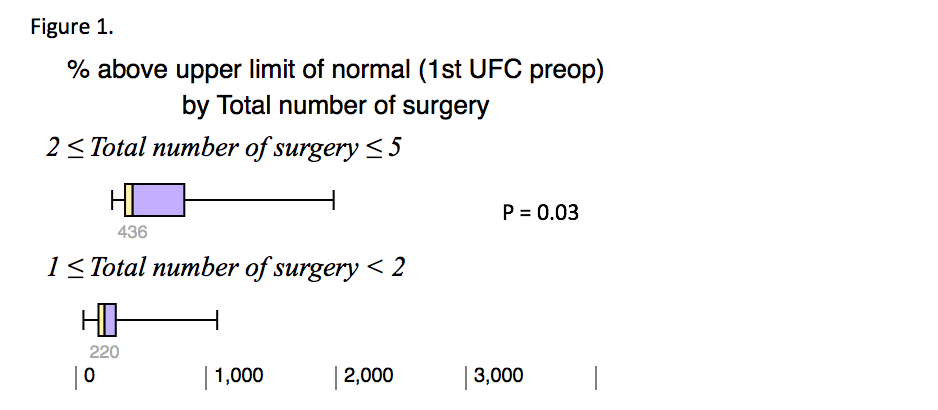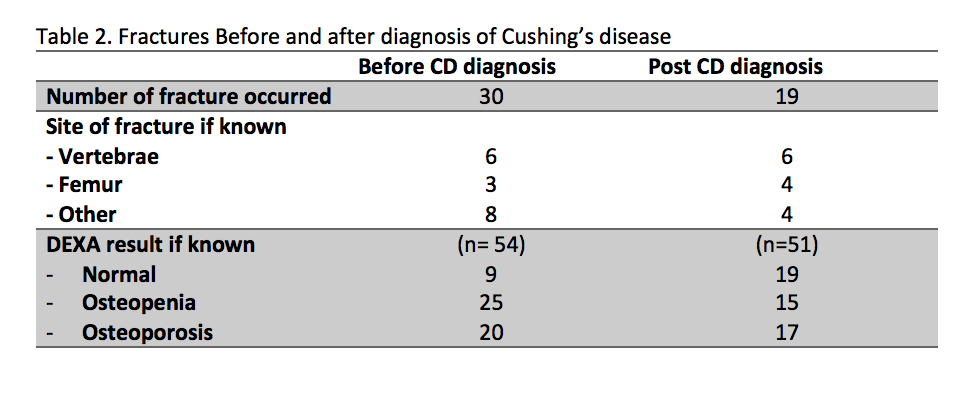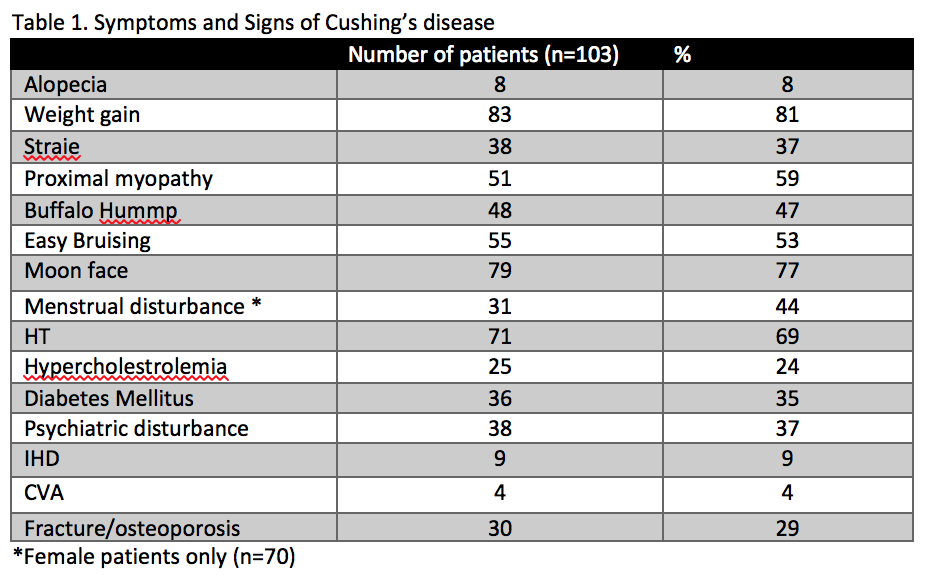Poster Presentation The Joint Annual Scientific Meetings of the Endocrine Society of Australia and the Society for Reproductive Biology 2017
Clinical characterization of patients with Cushing’s disease from two Australian tertiary hospitals. (#197)
Introduction
Cushing’s disease (CD) is rare and Australian long term outcome studies are limited.[1] Our aim was to clinically characterize patients with CD from two Australian tertiary centers.
Method: All histories of patients with treated Cushing’s disease at Royal Melbourne Hospital and Royal Adelaide Hospital between 1990-2016 were reviewed.
Results: The study included 103 patients. Median follow-up was 78 months (IQR29-156). Mean age of diagnosis was 46 years and 32% were male. Twenty-six percent of the patients had macroadenomas. Weight gain (81%, 83/103) was the most common symptom. Hypertension (74%, 84/103), osteoporosis (30%, 30/103) and diabetes (36%, 36/103) were also frequently present at diagnosis. Sixteen fractures had occurred before CD diagnosis and 19 more fractures occurred after. Most fractures were vertebral (24%, 12/35). Five patients sustained more than 1 fracture. Amongst 54 patients who had bone densitometry pre-operatively, 20 (37%) were in the osteoporosis range. After initial operation, 71% of patients (42/59) remained in biochemical remission without any additional treatment. Remission rate was higher (75%) for operations performed between 2010-2016. Tumour size did not appear to influence remission rate (p=0.50). Twenty-nine (28%) of patients required re-operation, seven patients (7%) required bilateral adrenalectomy and 25 (24%) received radiotherapy. There was a positive correlation between the initial 24 hour urinary-free-cortisol (UFC) level and the number of operations performed to treat CD. (p=0.03)
Conclusion: Weight gain, hypertension, osteoporosis and diabetes were the most common clinical characteristics observed in this Australian cohort with CD. Fragility fractures were prevalent both before diagnosis and post treatment of CD. Remission rates following initial surgery have improved in recent years, however additional therapies are often required. The level of pre-operation 24 hour UFC appear to correlate to number of operative procedures required to treat CD
.


- 1. Lindholm, J., et al., Incidence and late prognosis of cushing's syndrome: a population-based study. J Clin Endocrinol Metab, 2001. 86(1): p. 117-23.